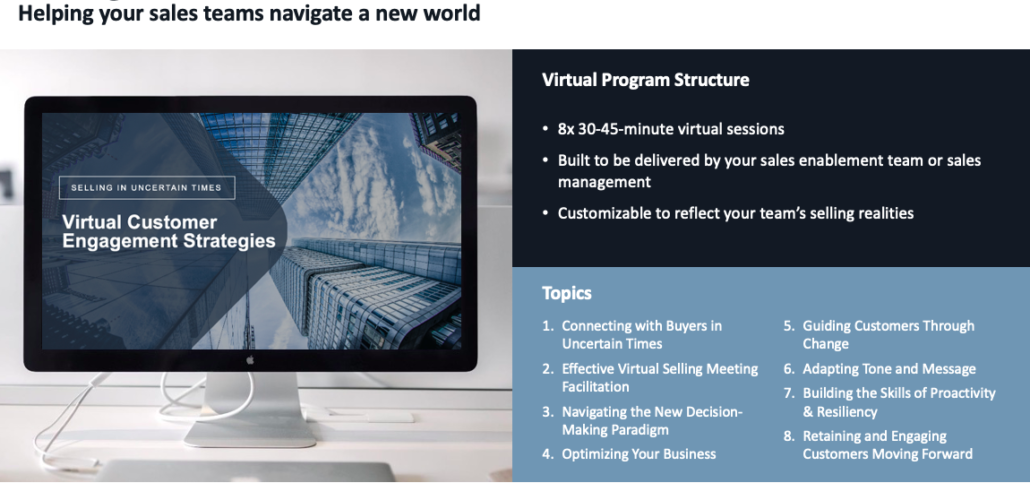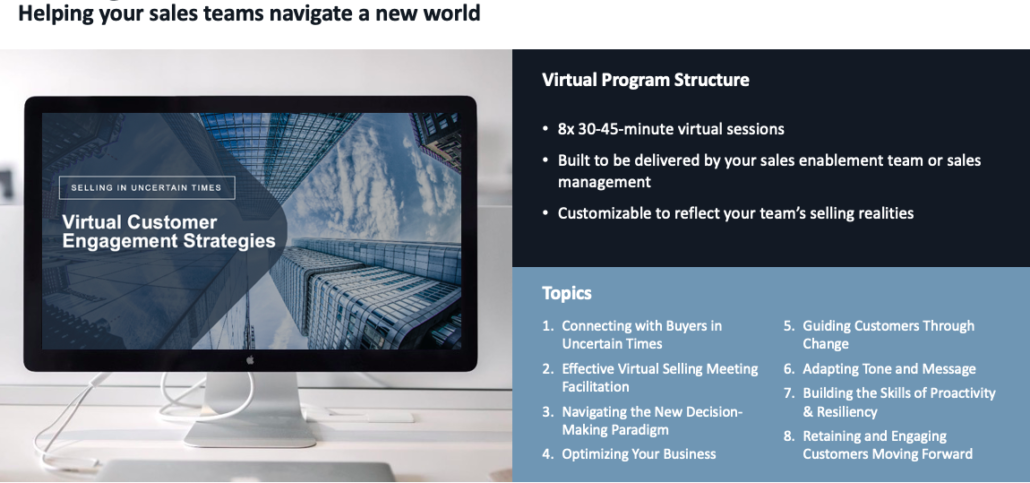All of our clients have made some investments in their sales organization. Whether it be money spent on sales training, a time and territory management offering, or an outing for team-building, many companies are making important investments in their people. However, one disconnect we see is that while companies are willing to spend money up front, they don’t always do the follow-up work needed to reinforce the lessons learned.
One area in which many companies have invested is a Customer Relationship Management (CRM) system. While their potential is invaluable, it’s clear that CRMs are not being used as tools to optimize the dollars spent in their people. Here are three questions to assess your sales training optimization as expressed through your CRM.
- Do tools reflect the steps in the sales process and promote the common vernacular used in training so everyone speaks the same language? Matthew J. Boyle, marketing director at a Massachusetts accounting and consulting firm, describes this scenario, “When employees manage their own contact information and share it unsystematically, data-quality issues proliferate, and compiling and sorting correct, current information becomes an immense task. This can result in a firm that functions like several different small practices under one roof instead of a cohesive whole.” CRM’s customized with company-wide vernacular can help.
- How do salespeople internalize their customer’s needs and what steps are necessary to complete the sale? This can be laid out in a CRM as well. If companies were better at defining and following up on sales steps within their CRM, training would be internalized and wins would increase. For example, salespeople could attach the follow-up letter outlining their sales meeting. That way, managers could coach to the correspondence, communication skills would increase, forecasting accuracy would improve, and trends could be analyzed.
- How do you coach through the information in your CRM? Organizations can all have the same training experience, yet inevitably skill levels will still vary dramatically. With a CRM based on a well-defined sales process, management will be able to quickly assess where individual development is needed. For example, a CRM would show that a salesperson has sent samples to a prospect. This is useful information, but it can also show that there has been no meeting or discussion of that prospect’s needs prior to the samples being sent. Product sent to a client before goals are shared is money down the drain. A manager could see this and use it as a coaching opportunity to reinforce the skills taught in training.
Like all good relationships, the match between training and the CRM is reciprocal. We help companies maximize their training dollars and dollars spent on CRMs by making sure both systems are optimized and well-integrated. Let us help your company design and implement a sales process that is optimized through your current CRM.








